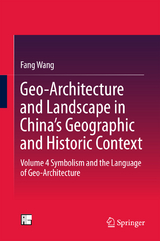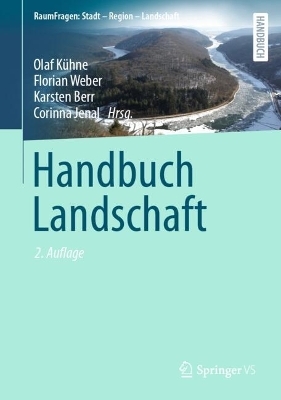Geo-Architecture and Landscape in China’s Geographic and Historic Context
Springer Verlag, Singapore
978-981-10-0490-2 (ISBN)
"This unprecedented work will be a unique and valuable contribution to the literature. Integrating as it does the disciplines of architecture, landscape architecture, and geography, Wang Fang’s voice is original, compelling, and will be much appreciated by English-speaking readers (and inside China, too, I can only imagine.)"Stephen M Ervin Assistant Dean Graduate School of Design, Harvard University July 2nd, 2013
"One reason for why there would be interest is because her research would fill some significant gaps in the literature.What is novel about Dr. Wang’s series is that she further extends this intellectual project of looking at Chinese architecture through Chinese eyes, by taking it one provocative step further."Annette M. Kim Associate Professor Department of Urban Studies and Planning, M.I.T. July 1st, 2013
Fang WANG is a registered urban planner and an associate professor in College of Architecture and Landscape Architecture at Peking University. After receiving a Ph. D in Architectural Design and Theory from Tsinghua University, Wang completed her postdoctoral research in geography, with concentration in urban in College of Urban and Environmental Sciences at Peking University. From 2011 to 2012, as a visiting scholar, Ms. Wang joined in the teaching instruction for a studio at Graduate School of Design, Harvard University. She is a member of International Association for China Planning (IACP), the Chinese Academy of City Planning, the Chinese Geographical Society, and the Chinese Architectural Society. Her research introduces geographical philosophy, methods and techniques into urban planning and architectural design which have long been engineering-dominated fields. Her focus is also known as ‘Geo-design’ – research on the influence of geography upon urban planning and design and, reflexively, urban planning and design responses to geography. Wang is an primary author of more than 70 published articles which were published in some important journals, including Journal of Environmental Psychology、International Journal of Tourism Research、Managing Leisure, and she also has authored 2 books and translated a total of 8 books. She has piloted one of China Natural Science Foundation project and 6 provincial and ministry-level funding, and is also as principal partner in 3 other China National Foundation. In addition, she has won the 3rd prize of Excellent Academic Achievements by Chinese National Tourism Administration (2011) and the 2nd prize of Beijing Youth the Outstanding Scientific and Technological Thesis by Beijing Association for Science and Technology (2009).
Part One Implantation and Integration.- Introduction.- "Embedment" Cases.- "Integration" Cases.- Part Two Metaphor and Symbolism.- Introduction.- "Metaphor and Symbolism" Cases.
| Erscheinungsdatum | 08.10.2016 |
|---|---|
| Zusatzinfo | 197 Illustrations, color; 56 Illustrations, black and white; XXV, 233 p. 253 illus., 197 illus. in color. |
| Verlagsort | Singapore |
| Sprache | englisch |
| Maße | 155 x 235 mm |
| Themenwelt | Naturwissenschaften ► Geowissenschaften ► Geografie / Kartografie |
| Technik ► Architektur | |
| Schlagworte | Implantation and Integration • Metaphor and Symbolism • New-style Shikumen of Shanghai • Old Summer Palace • Symbolism and Language • Tianjin Five Avenues |
| ISBN-10 | 981-10-0490-0 / 9811004900 |
| ISBN-13 | 978-981-10-0490-2 / 9789811004902 |
| Zustand | Neuware |
| Haben Sie eine Frage zum Produkt? |
aus dem Bereich




